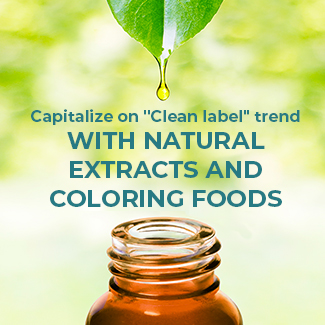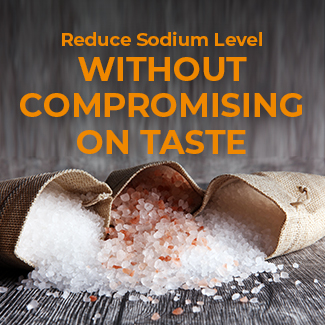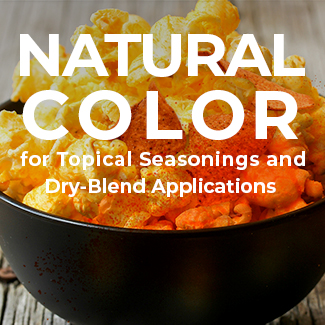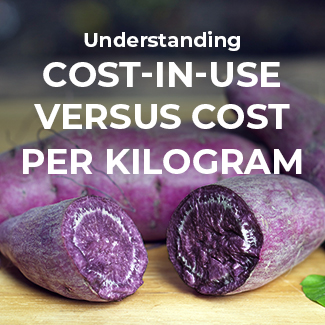Bringing Vibrant and Eye-catching Colours to Oil-Based Bakery Applications: Icings, Frostings, and Chocolate Decoration
As a source of indulgence, bakery products have the opportunity to break the everyday monotony, and perfect any “me time” or celebration with others. Playing with textures and colours is a common way to help cakes, cookies, or cupcakes stand out while elevating the sensory experience. For example, colourful decorations can signal flavour profiles and differentiate limited edition or seasonal offers.
37-44% OF POLISH CONSUMERS SAID THAT “VISUALLY APPEALING” IS A QUALITY THEY DESIRE WHEN IT COMES TO CAKES/CAKE BARS AND DOUGHNUTS.
(MINTEL, 2022)
Meeting consumers’ growing interest in natural and familiar food ingredients, colouring foods has a significant advantage in creating enticing products. Finding the most suitable colouring solution enables developers to launch naturally stunning products while avoiding technical challenges. However, working with colouring from natural sources requires expertise. Let’s look at some factors and examples worth knowing when formulating with plant-based food colouring in bakery decorations.
Oil and Water Don’t Mix?
We all heard the saying that oil and water don’t mix. However, most people don’t know that solubility has a considerable role in the success of natural colourings in food and beverages. For example, botanically sourced red colours based on radish and beetroot, which are usually water-soluble by nature, would normally be difficult if not impossible to mix into applications with no water– only oil or fat, like cake frostings. At the same time, shades of orange and yellow, like turmeric, are more commonly oil-soluble, causing some challenges when applied in water-based applications like beverages or water-based icings.
When an oil-or water-soluble natural colour is utilised in an application that is not compatible, there are several risks:

What kind of process can enable the usage of colouring foods in both oil- and water-based applications? Two or more liquids normally immiscible (unblendable) can be mixed by creating an emulsion. In this process, one liquid is dispersed through the other via small droplets, resulting in a homogenous mixture. Sensient’s Advanced Emulsion Technology (AET™) optimises the solution and transforms it into a stable water- or oil-soluble and dispersible version. With AET™ it is possible to create a rainbow of stable, homogeneous solutions providing standardised and perfect colour results in the final product.
Liquid Solutions for Bakery Decorations
Compound coatings, chocolate decorations, frostings, and fillings are prime examples of oil-based applications where a standard water-soluble colour would not be the best choice. So how can developers unleash nature’s full rainbow in oil-based applications? Watch our technical expert, Camilla showcasing bright natural shades achieved with Sensient’s liquid oil-soluble and dispersible ranges:

Micronized Powder Solutions (Microfine™) for Bakery Decorations
Colourful frosting and decorations are often combined or laid on top of each other for an eye-catching look. When there is a coloured layer on top of another, the colour might migrate. In the case of two layers with the same phase, one can bleed into another like a colourful water-based icing decoration or writing on a birthday cake into the water-based white surface below. Or, as you can see below an oil-soluble colour can bleed into a fat-based surface due to the affinity and moisture of the colouring contained in the icing.
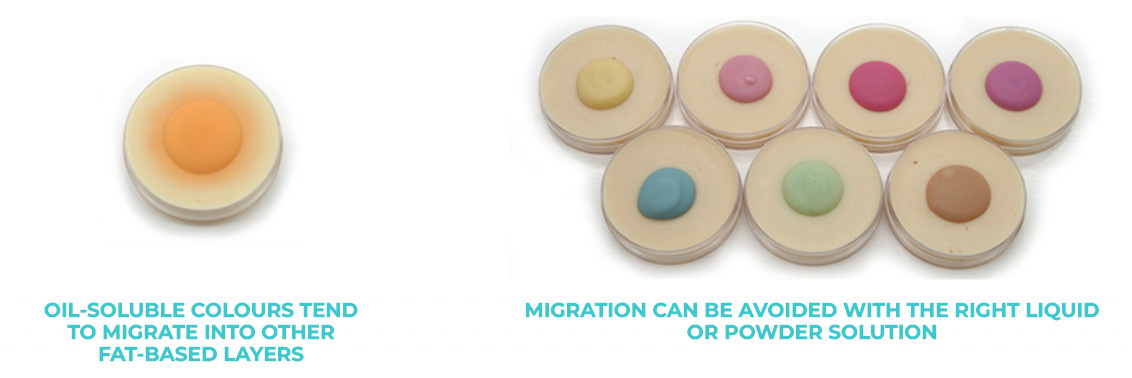
Although the colour bleeding might not be visible immediately, developers can have peace of mind with the unique Microfine™ range while achieving vibrant shades naturally. When the originally water-soluble Microfines™ are not hydrated but dispersed in oil-based products, they will stay oil-dispersible and not oil-soluble. As the colouring is technically water-soluble, Microfines™ are the perfect solutions.
Due to the lack of bleed, developers can achieve more vibrant and stronger colours by increasing the amount of colouring. Using Sensient Microfines™ based on colouring foods and natural colours can benefit different fat-based decorations or white chocolate-based chips, often used in cakes, cookies, and other bakery items for a unique look. Watch this video to discover the advantages of Microfine™ in fat-based applications:
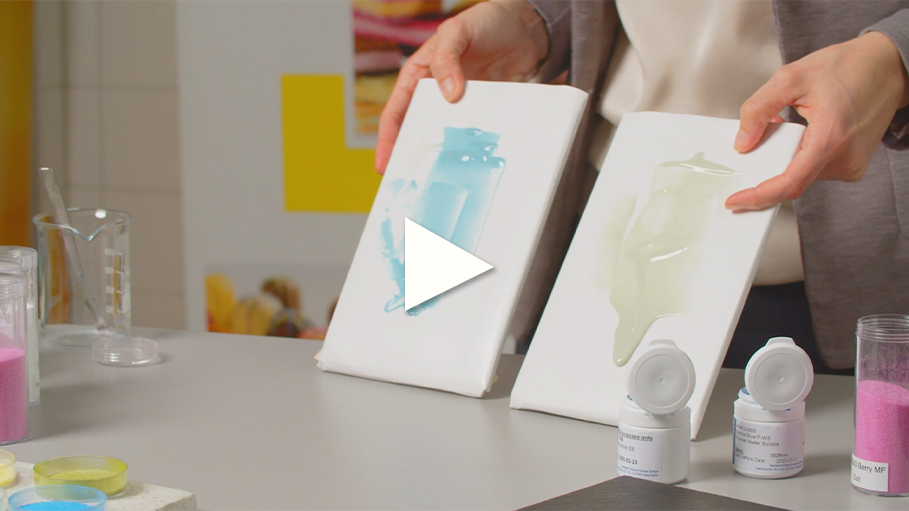

If you have any questions regarding natural colouring solutions or you are facing some development challenges, feel free to reach out and request a consultation with our technical experts. Would you like to try our liquid or powder products for your fat-based application? Request a sample



















